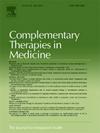The potential of acupuncture in the treatment of Alzheimer's disease: An exploration from traditional Chinese medicine to modern technology
IF 3.5
3区 医学
Q1 INTEGRATIVE & COMPLEMENTARY MEDICINE
引用次数: 0
Abstract
Alzheimer's disease (AD) is a neurodegenerative disease with the highest prevalence worldwide, and it places considerable life and economic burdens on patients and their families. Currently, treatments for AD only delay symptoms, fail to reverse disease progression, and are often accompanied by significant side effects. Acupuncture, a nonpharmacological therapeutic method originating from China, has a history of thousands of years and is characterized by safety and economy. In recent years, the potential of acupuncture use in AD treatment has received widespread attention. With the rapid development of modern science and technology, the mechanism of action of acupuncture in the treatment of AD has gradually become increasingly clear. Therefore, we searched the databases of China National Knowledge Infrastructure (CNKI), PubMed and Web of Science for relevant studies on acupuncture for AD in recent years. According to the literature, acupuncture can improve cognitive function in AD patients through various mechanisms, such as reducing β-amyloid deposition, inhibiting Tau protein hyperphosphorylation, and attenuating neuroinflammation, and shows good therapeutic potential. Future studies should further explore in depth the mechanisms of acupuncture in treating AD through the rational use of modern science and technology techniques, with the aim of providing new strategies for the treatment of AD.
针灸治疗阿尔茨海默病的潜力:从中医到现代技术的探索。
阿尔茨海默病(AD)是全球患病率最高的一种神经退行性疾病,给患者及其家庭带来了相当大的生活和经济负担。目前,阿尔茨海默病的治疗只能延缓症状,不能逆转疾病进展,而且往往伴有明显的副作用。针灸是一种起源于中国的非药物治疗方法,具有几千年的历史,具有安全、经济的特点。近年来,针灸在阿尔茨海默病治疗中的应用潜力受到了广泛关注。随着现代科学技术的飞速发展,针灸治疗AD的作用机制逐渐清晰。因此,我们检索了中国知网(CNKI)、PubMed、Web of Science等数据库,查找近年来针灸治疗AD的相关研究。文献显示,针灸可通过减少β-淀粉样蛋白沉积、抑制Tau蛋白过度磷酸化、减轻神经炎症等多种机制改善AD患者的认知功能,显示出良好的治疗潜力。今后的研究应通过合理运用现代科学技术手段,进一步深入探讨针灸治疗AD的机制,为AD的治疗提供新的策略。
本文章由计算机程序翻译,如有差异,请以英文原文为准。
求助全文
约1分钟内获得全文
求助全文
来源期刊

Complementary therapies in medicine
医学-全科医学与补充医学
CiteScore
8.60
自引率
2.80%
发文量
101
审稿时长
112 days
期刊介绍:
Complementary Therapies in Medicine is an international, peer-reviewed journal that has considerable appeal to anyone who seeks objective and critical information on complementary therapies or who wishes to deepen their understanding of these approaches. It will be of particular interest to healthcare practitioners including family practitioners, complementary therapists, nurses, and physiotherapists; to academics including social scientists and CAM researchers; to healthcare managers; and to patients. Complementary Therapies in Medicine aims to publish valid, relevant and rigorous research and serious discussion articles with the main purpose of improving healthcare.
 求助内容:
求助内容: 应助结果提醒方式:
应助结果提醒方式:


